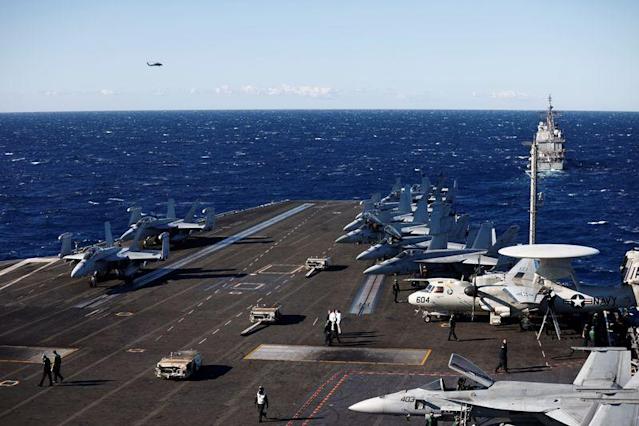The U.S. admiral leading the Harry S. Truman aircraft carrier strike group wouldn’t speculate on Wednesday about what comes next after exercises in the Adriatic Sea end in the coming days. Navy rules prohibit talking about future operations.
But as the Pentagon looks for ways to reassure jittery NATO allies following Russia’s deployment of over 100,000 forces near Ukraine, the Truman is a powerful symbol of U.S. military might and NATO capabilities in a region increasingly on edge.
“The decisions that are made about where a strike group from the United States deploys is really at the Secretary of Defense level,” Rear Admiral Curt Renshaw said.
“But we are ready to operate anywhere and we planned to be on an extended deployment when we left Norfolk (Virginia) and we plan to be able to operate wherever we are needed most.”
The strike group, which was placed under NATO operational control, is in the Adriatic for coordinated maritime maneuvers, anti-submarine warfare training and long-range strike training scheduled to run through Feb. 4.
When it announced the exercises, dubbed Neptune Strike 2022, NATO said it was the first time since the Cold War that a full U.S. carrier strike group came under NATO command.
The U.S. Department of Defense held up the Truman’s role in Neptune Strike 2022 as evidence the NATO alliance was “united, capable and strong.”
Earlier on Wednesday, the United States announced it will send nearly 3,000 troops to Poland and Romania to reinforce Eastern European NATO allies in the face of what Washington describes as a Russian threat to invade Ukraine.
Russia denies any plan to invade its neighbor but says it could take unspecified military measures if its demands are not met, including a promise by NATO never to admit Kyiv.
Source: gCaptain






